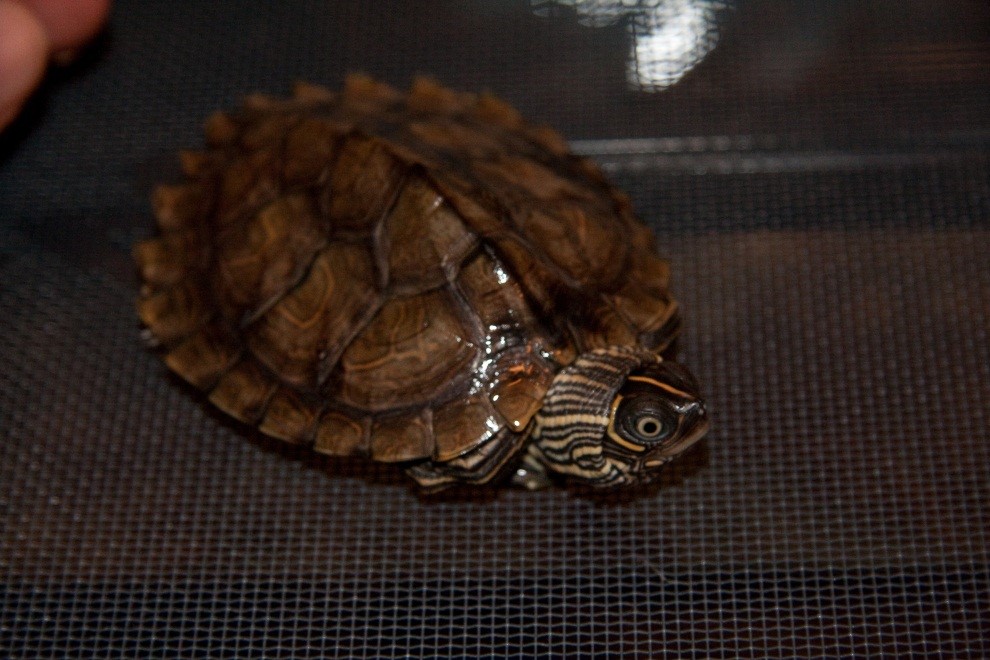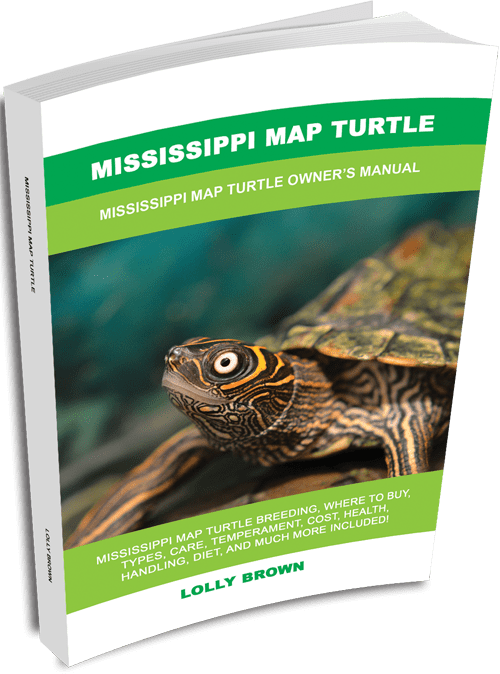CHAPTERS
Navigate to chapter
► Chapter One: Basic Biological Information
► Chapter Two: Turtle Care Sheet
► Chapter Three: Health Care and Medical Attention: What to Do When Your Turtle Gets Sick
► Chapter Four: Fun Facts and Myths
► Chapter Five: Mississippi Map Turtle Laws and Regulations
► Chapter Six: Petting and Training Your Mississippi Map Turtle
► Chapter Seven: What to Do in Different Turtle Situations
Chapter Two: Turtle Care Sheet

Once you have decided that you will get a pet turtle, make sure that you don’t get one from the wild. Mississippi map turtles, for instance, have great difficulty adapting to captivity even though they are known for their adaptability and resiliency. It is best to get a captive-bred Mississippi map turtle as they have already adjusted to captive conditions once they are hatched and they tend to be tamer. Additionally, there is less likelihood of the turtles harboring parasites when you get them from your local breeder or pet store. You don’t want a pet that is a disease carrier. That said, you need to remember that every turtle specie has specific requirements and care needs, from diet to housing to temperatures to health care.
In this chapter you will find detailed instructions and advice on how to care for your Mississippi map turtle so that it can live a long and healthy life.
As with every animal, a balanced diet is of utmost importance. Your Mississippi map turtle is an omnivore—it will like to eat meat from small animals as well as different kinds of leafy vegetables. You can get nutritionally-balanced turtle food in the form of pellets from your local pet store, too. Make sure that you supplement your turtle’s diet with low-fat proteins and vitamin-rich greens such as dandelion leaves, spinach, romaine lettuce, escarole, red leaf, parsley, endive, kale and other dark greens.
When it comes to protein, you will know which kinds of meat your pet Mississippi map turtle prefers according to its gender. Female maps have bigger jaws and would love to eat slightly bigger prey such as clams and snails. Male maps will enjoy small fish, mealworms, tiny crustaceans, mollusks, and aquatic insects. Make sure that you don’t give your turtles live mealworms as they might injure your turtle. Your turtles will also eat dead small fish, so they won’t have a hard time catching live ones. Map turtles can also eat crickets and blood worms.
Do not feed your turtle with snails or crustaceans that you get from the wild—they may be carrying parasites or worms that can harm your turtles. You can give your Mississippi map turtle finely chopped fresh apple pieces—but you can only give them as a treat, not as everyday food.
If you get a young turtle, keep in mind that it will have a very big appetite and you should feed it daily. However, you should feed it with just enough to prevent it from being hungry. If you place too much food, it won’t stop from gorging itself.
Recommended Feeding Schedule
| Age | Frequency | Diet |
| Hatchlings | Once a day | Turtle pellet and live foods |
| Juvenile | 4 to 5 times a week | Live foods and vegetation |
| Adult | 3 to 4 times a week | Live foods and vegetation |
You will be surprised to know that turtles can actually “beg” for food. When you pass by their home, you will notice your pet looking longingly at you or be close to where they know the food shelf is. It can be hard to resist those adorable yes, but you should. As much as you love to see your pet turtle feed, never give it too much food. To determine how much you should give, check how much your turtle can consume within 4 to 5 minutes and use that as a basis. This will help you avoid overfeeding and eventual obesity and fatty liver disease.
Remember, everything in excess is never good. You should adjust the food intake or feeding schedule according to your pet turtle’s growth rate. Tip: your turtles can have an all-you-can-eat romaine lettuce no matter what its age is, because romaine is mostly water.
Mississippi maps will feed in the water, so you should place your leaves in the water or clip them to the side of their aquarium using rubber suction. You can also put the leaves and protein on their basking site, in an area near the water.
If you want to keep the quality of your water clean—which is very important to the Mississippi map turtles—you can use a separate feeding tank, especially if you have the space and resources. This will help you clean up food wastes easily and prevent the spread of salmonella which is harmful for you.
Your Mississippi map turtle will also need a daily calcium supplement that you can sprinkle on their food. Provide your pet with a cuttlefish bone that it can gnaw on. Keep it away from the water so that it will remain dry. You can also give your map turtle the appropriate multi-vitamin supplement once or twice a week.
On the other hand, your turtle may go through a hibernation period and will stop eating for a period of time. If you feel that it is not hibernating and its lack of appetite is a sign of illness, do not hesitate to get a checkup with a veterinarian.
The Mississippi map turtles will almost always swim. And when they’re not swimming, they will stay in the basking area and lounge. You will find a variety of tanks specially made for map turtles in your local pet store.
It is important to set up your aquarium meticulously so that your Mississippi map turtle will grow well in captivity. An aquarium or tank should be large enough for your map turtle to swim in freely. Baby turtles are about 1 ½ to 2 inches in size. Since they don’t grow too big, a 25-gallon aquarium will be enough for a male. If you are getting a female map turtle, you will need at least a 75-gallon tank because females grow larger.
Get a good filtration system to clean your water regularly, keep it clear and prevent odors. Purchase something that is larger than the recommended filter. A submersible filter like canister filters or cascade internal filters will constantly run and provide aeration to the water portion of your enclosure.
The tank or aquarium should have a minimum height of 300mm as well as a dock and ramp placed in such a way that so that turtle can have enough space to swim and get out. A good guide to getting the right size of your aquarium or tank is the ratio of ten gallons to every each of your turtle. You will need a sizable aquarium if you are planning to put more than one turtle in it. It is better to get a bigger one than having one that is way too small.
Make sure you put your aquarium or tank in a safe place, especially if you have children or other pets at home. They can reach out or jump in and make the aquarium fall and cause injury. Keep the enclosures away from tables and edge of shelves. Additionally, secure any cords and tubes from heaters, lights, and filters.
In the past, keepers were not really providing sanitary living conditions for turtles. They used to keep turtles in turtle bowls where the water was not filtered and was only changed when it smelled foul.
Continue Reading…
Want to read the entire thing?

